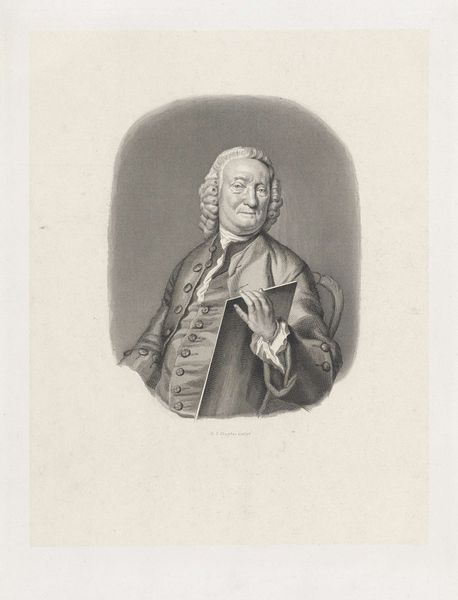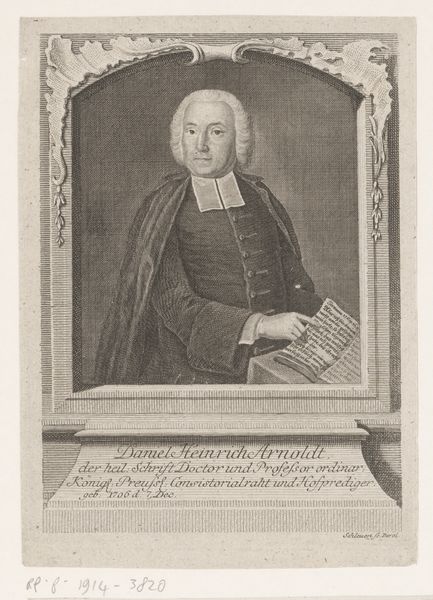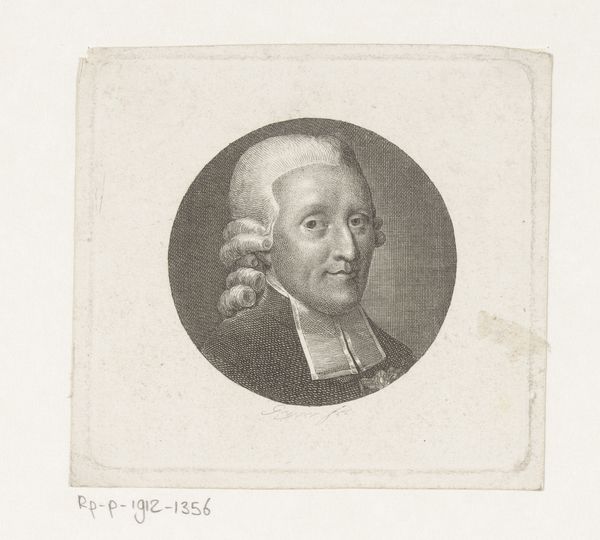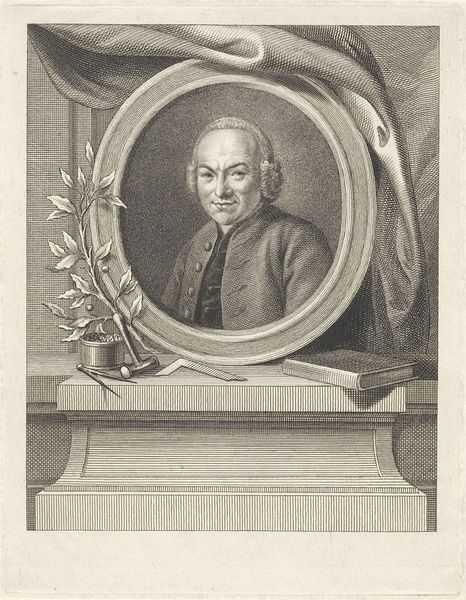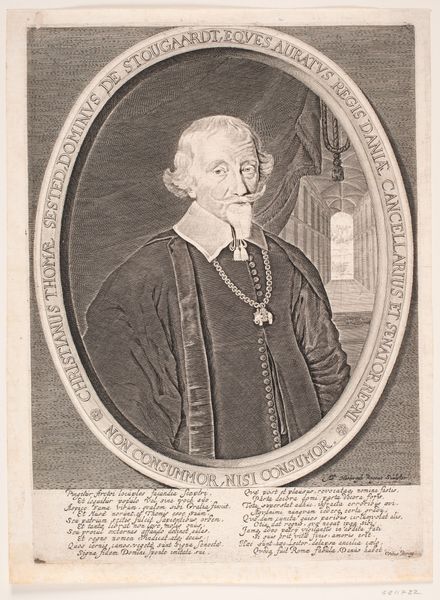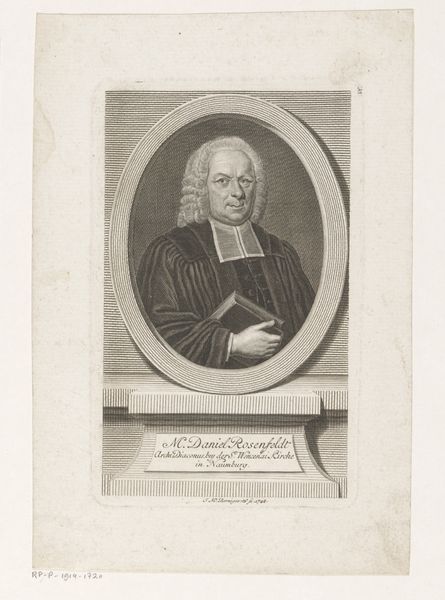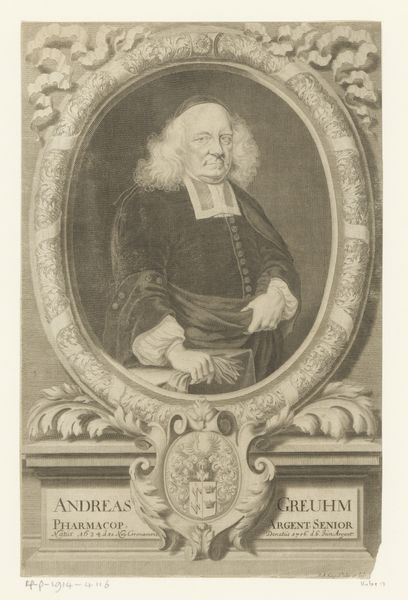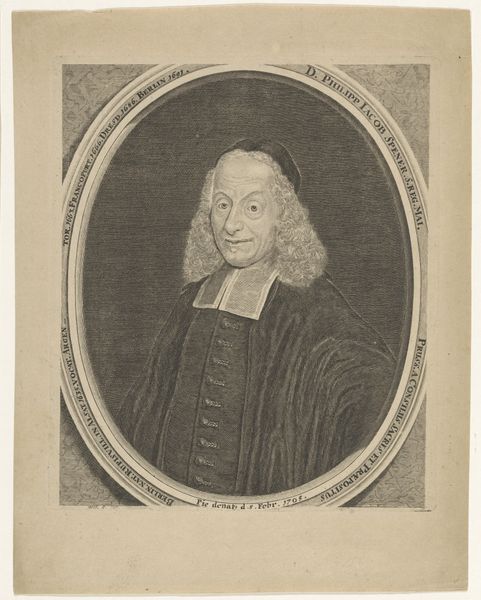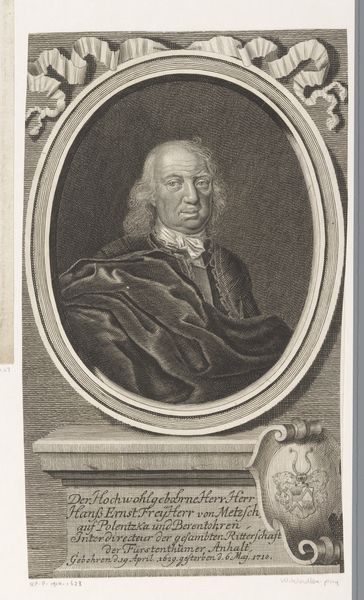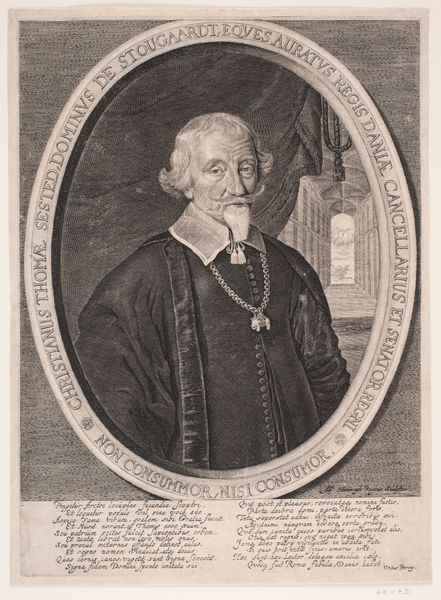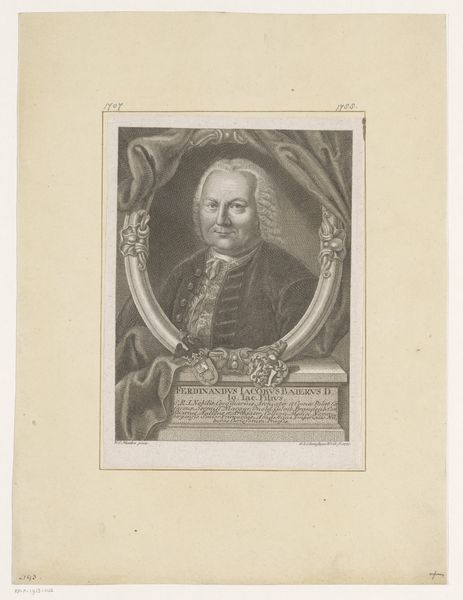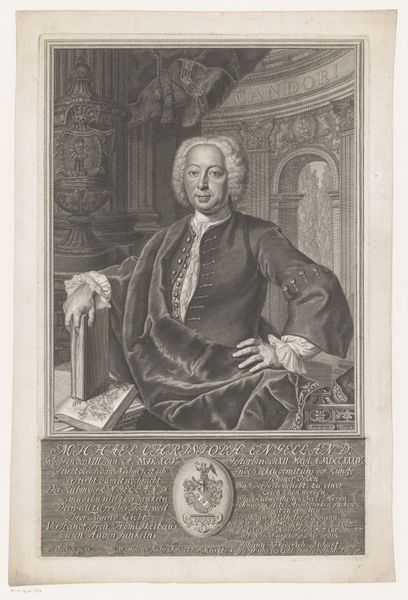
print, engraving
#
portrait
#
baroque
# print
#
history-painting
#
engraving
Dimensions: height 339 mm, width 223 mm
Copyright: Rijks Museum: Open Domain
Editor: Here we have Valentin Daniel Preissler's "Portret van Johann Konrad Wirz op 60-jarige leeftijd," an engraving from 1749. The composition feels almost staged, with Wirz framed by what looks like a window onto a library. How do you read this portrait, considering its historical and material context? Curator: From a materialist perspective, it's interesting to consider the division of labor inherent in this print. We have the portrait's design, presumably based on a painting—suggested by the inscription "2. Caspar… pinx et excud." Then the engraving process itself, meticulously executed by Preissler. What does it mean for Wirz to be captured through these layers of production? Is it straightforward documentation or something else? Editor: I see what you mean! It highlights the mediation involved, it isn’t just Wirz but an interpretation crafted through specific labor and materials. Curator: Exactly! The choice of engraving, a replicable medium, speaks volumes too. It suggests a desire for wider dissemination of Wirz’s image and, by extension, his authority. Also, notice the book-lined backdrop. What significance do the books themselves have? Consider them less as signifiers of learning and more as products of a particular time, accessible only through specific means of production and distribution. How does their presence here solidify Wirz's social and intellectual position? Editor: So it's about understanding not just what is shown, but *how* it was made and *why* this medium was chosen in this context. Curator: Precisely! It prompts us to investigate the networks of artisans, patrons, and consumers involved in the creation and circulation of such images, and what this tells us about power structures in 18th century society. Editor: I hadn’t considered the layers of production before – thanks to you, I can appreciate the print beyond just a historical portrait. Curator: And I can appreciate that, by exploring material conditions, we ground our art historical study in concrete realities of past labor.
Comments
No comments
Be the first to comment and join the conversation on the ultimate creative platform.


